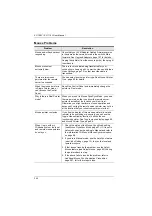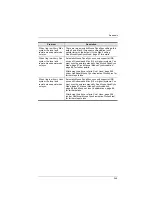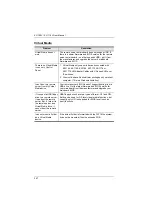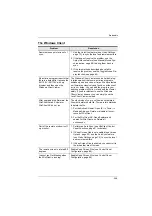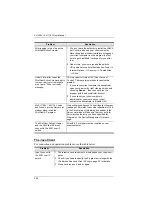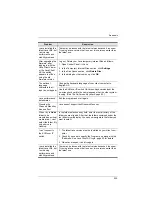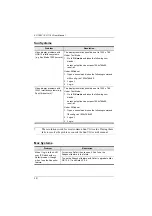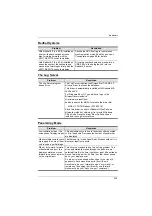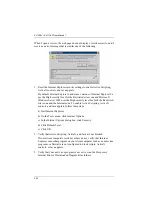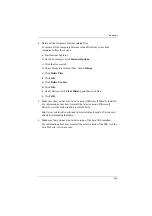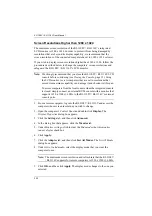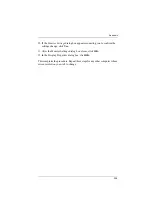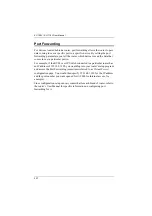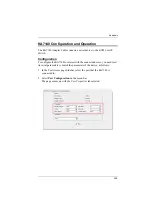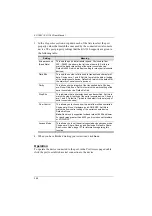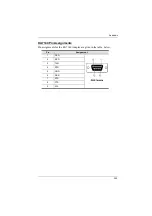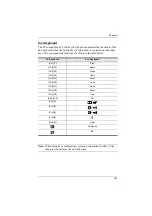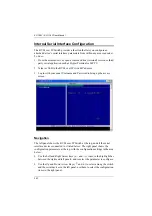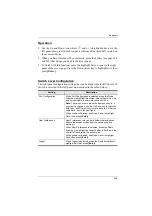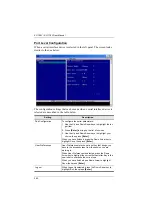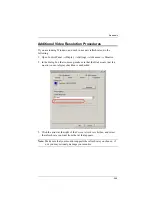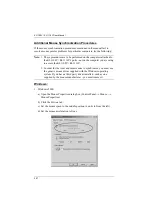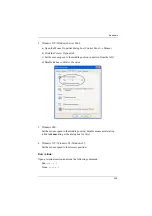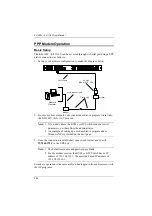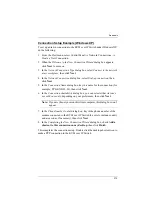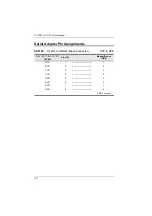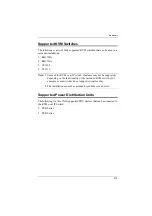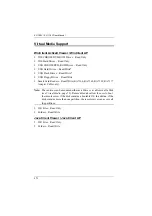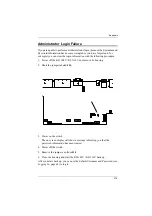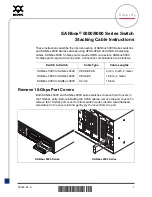
KL1108V / KL1116V User Manual
259
3. In the
Properties
section, drop down each of the lists to select the port
property values that match the ones used by the connected serial console
device. The port property settings that the KA7140 supports are given in
the following table:
4. When you have finished making your selections, click
Save
.
Operation
To operate the device connected to the port, in the Port Access page double
click the port to establish a serial connection to the device.
Setting
Meaning
Bits per second
(Baud Rate)
This sets the port’s data transfer speed. Choices are from
300—38400 (drop down the list to see them all). Set this to
match the baud rate setting of the serial console device.
Default is 9600 (which is a basic setting for many serial console
devices).
Data Bits
This sets the number of bits used to transmit one character of
data. Choices are: 7 and 8. Set this to match the data bit setting
of the serial console device. Default is 8 (which is the default for
the majority of serial console devices).
Parity
This bit checks the integrity of the transmitted data. Choices
are: None; Odd; Even. Set this to match the parity setting of the
serial console device. Default is Odd.
Stop Bits
This indicates that a character has been transmitted. Set this to
match the stop bit setting of the serial console device. Choices
are: 1 and 2. Default is 1 (which is the default for the majority of
serial console devices).
Flow Control
This allows you to choose how the data flow will be controlled.
Choices are: None, Hardware, and XON/XOFF. Set this to
match the flow control setting of the serial console device.
Default is None.
Note: None
is only supported for baud rates of 9600 and lower.
For baud rates greater than 9600, you must choose
Hardware
or
XON/XOFF
.
Access Mode
This allows you to set the serial console device’s access mode.
Choices are: Share, Occupy, and Exclusive. Default is Share.
See
, page 127 for information regarding this
function.

